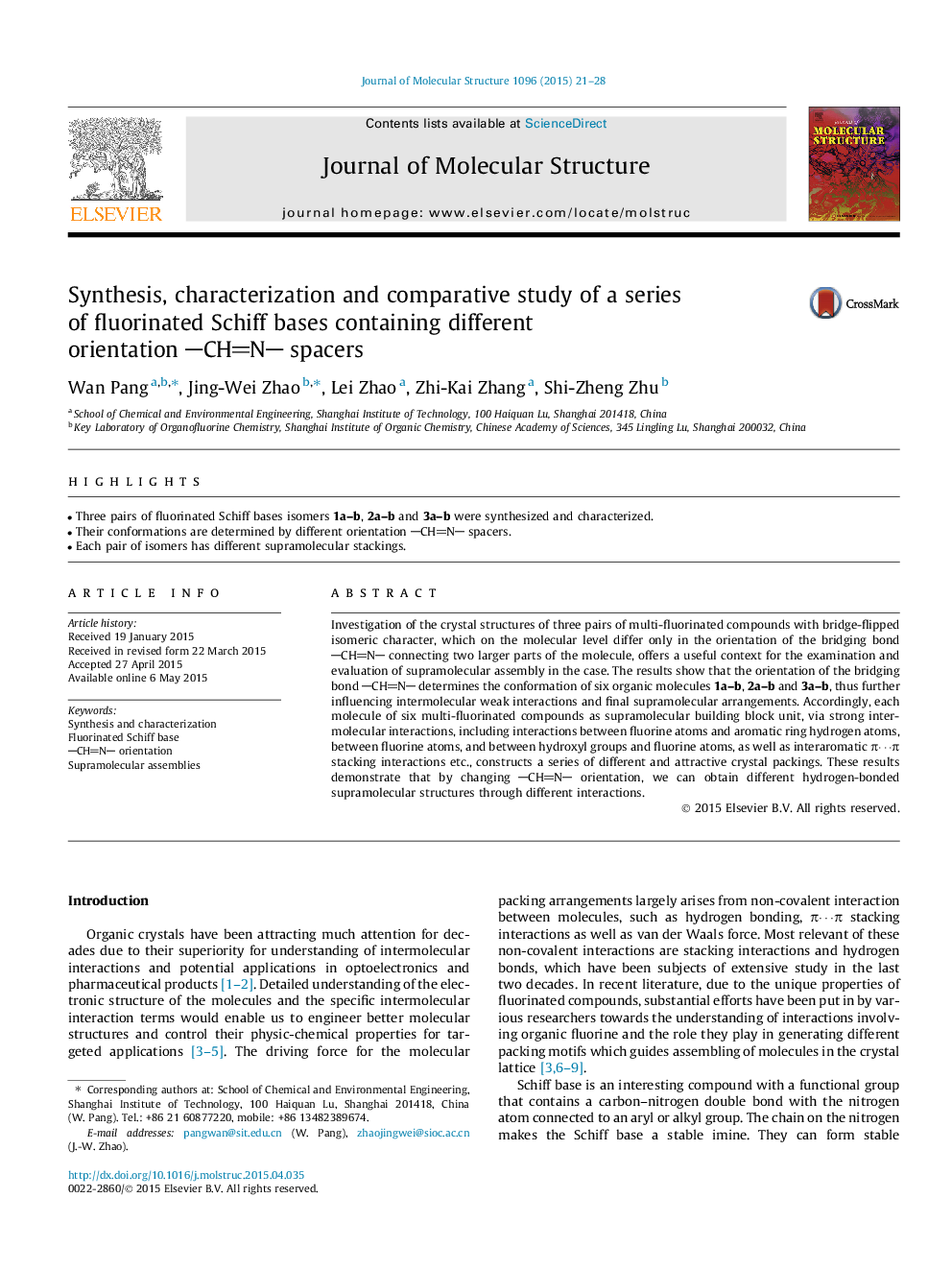| Article ID | Journal | Published Year | Pages | File Type |
|---|---|---|---|---|
| 1401832 | Journal of Molecular Structure | 2015 | 8 Pages |
Abstract
Investigation of the crystal structures of three pairs of multi-fluorinated compounds with bridge-flipped isomeric character, which on the molecular level differ only in the orientation of the bridging bond CHN connecting two larger parts of the molecule, offers a useful context for the examination and evaluation of supramolecular assembly in the case. The results show that the orientation of the bridging bond CHN determines the conformation of six organic molecules 1a-b, 2a-b and 3a-b, thus further influencing intermolecular weak interactions and final supramolecular arrangements. Accordingly, each molecule of six multi-fluorinated compounds as supramolecular building block unit, via strong intermolecular interactions, including interactions between fluorine atoms and aromatic ring hydrogen atoms, between fluorine atoms, and between hydroxyl groups and fluorine atoms, as well as interaromatic Ïâ¯Ï stacking interactions etc., constructs a series of different and attractive crystal packings. These results demonstrate that by changing CHN orientation, we can obtain different hydrogen-bonded supramolecular structures through different interactions.
Related Topics
Physical Sciences and Engineering
Chemistry
Organic Chemistry
Authors
Wan Pang, Jing-Wei Zhao, Lei Zhao, Zhi-Kai Zhang, Shi-Zheng Zhu,
